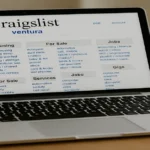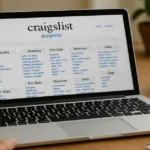You’re constantly online, leaving a trail of digital footprints. But do you know what they reveal about you? Your habits, preferences, and even your location are all exposed. It’s not just about what you’re sharing. It’s also what you’re unknowingly leaving behind.
Discover the impact of your own digital footprint on your identity and learn how to protect it.
Understanding digital footprint and its types
Your digital footprints, from active and passive to social media posts, are the traces you leave during your online activity.
Each website you visit, every post you make, and every search engine query you input contribute to your footprint. Your browsing history isn’t just a record of where you’ve been. It’s a breadcrumb trail that leads right back to you.
Whether you’re actively posting on a social media platform, shopping online, or mobile banking app buying, your internet browsing history is being noted. This information can be used to build internet users’ profiles, from mailing addresses to interests and habits.
Tools like a digital mailbox or a VPN can be the first step to controlling your online image.
Examples and impact of digital footprint
Your digital footprint’s impact on your online reputation is profound. Think about your online activities and both your active and passive digital footprints.
Active digital footprints include voluntary actions like posting on social media accounts or completing online forms.
Passive footprints, on the other hand, are more challenging to control. They’re composed of website data, search histories, and more, often gathered without your consent.
The importance of protecting your digital footprint
Active digital footprint management involves knowing what you’re intentionally sharing online while understanding that your passive digital footprint is about recognizing the data collected without direct input.
You must balance your online engagement with maintaining online privacy. Every post, every click, and every digital interaction matter.
Consider what you post, where you post it, and who can gain access to it. Be mindful of the data trail you’re leaving behind.
How to protect your online privacy
To protect your online identity and privacy:
- Limit the personal details you share and create social media accounts.
- Be cautious about the apps you download and the websites you visit.
- Regularly update your software to patch any security vulnerabilities.
- Install an anti-virus program and consider using a virtual private network (VPN) to encrypt your internet connection.
- Create strong passwords. Don’t use obvious choices like ‘123456’ or your birthday. Mix it up with a combination of letters, numbers, and symbols.
- Take advantage of two-factor authentication if it’s available. This protection adds a layer of security to financial data and can be a lifesaver in a data breach.
Educating yourself on privacy risks
While it’s essential to implement protective measures, educating yourself on privacy risks and best practices is crucial to ensuring you’re not leaving yourself vulnerable to digital threats. Furthermore, be aware of the terms and conditions you agree to when using online banking services.
Last words
Every digital action leaves a digital footprint. Your online behavior, both active and passive, forms a detailed picture of who you are. It impacts your digital identity and thus needs to be protected. So, take control and create a positive digital footprint. Educate yourself on privacy risks and implement strategies to safeguard your digital identity.











